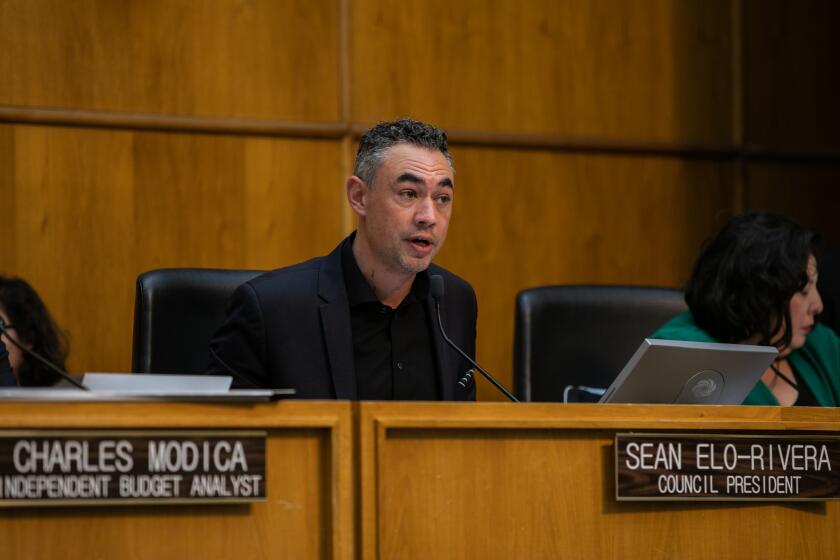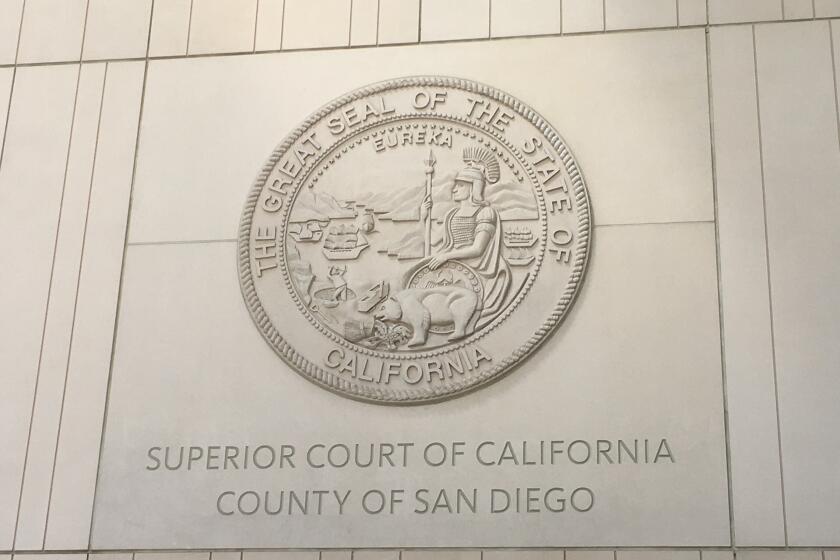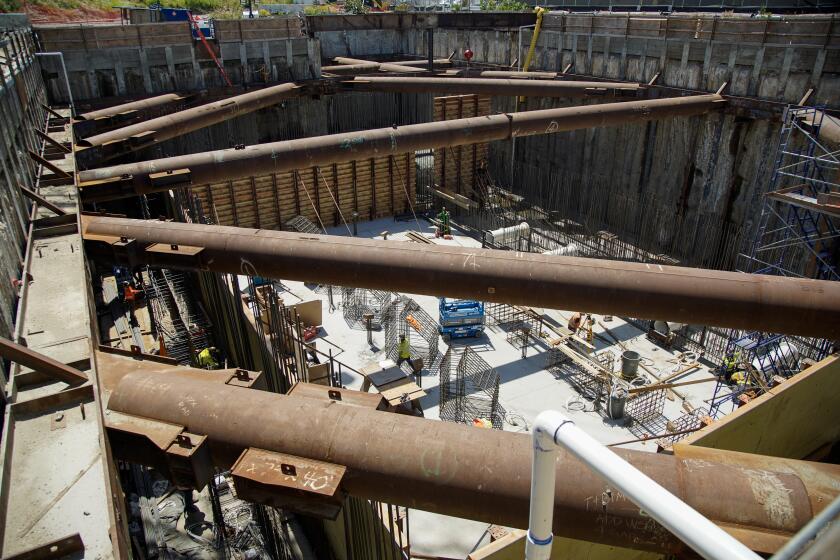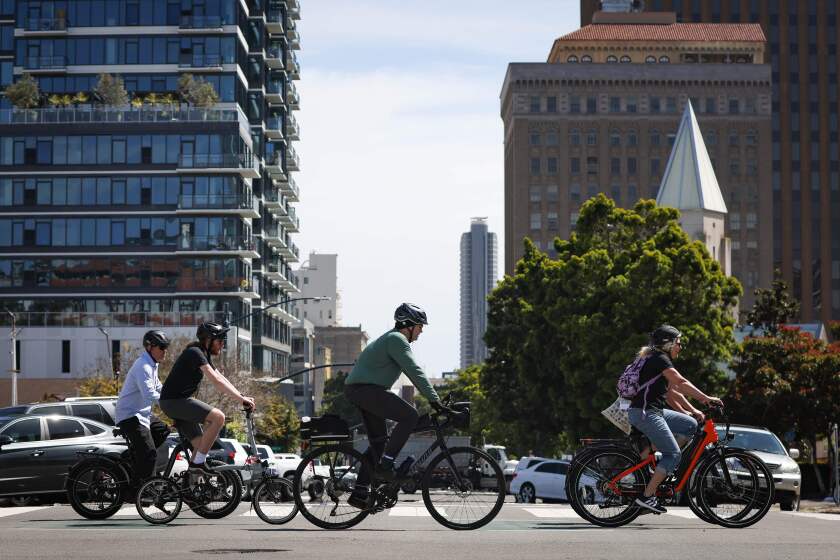Is Faulconer vulnerable on public safety?
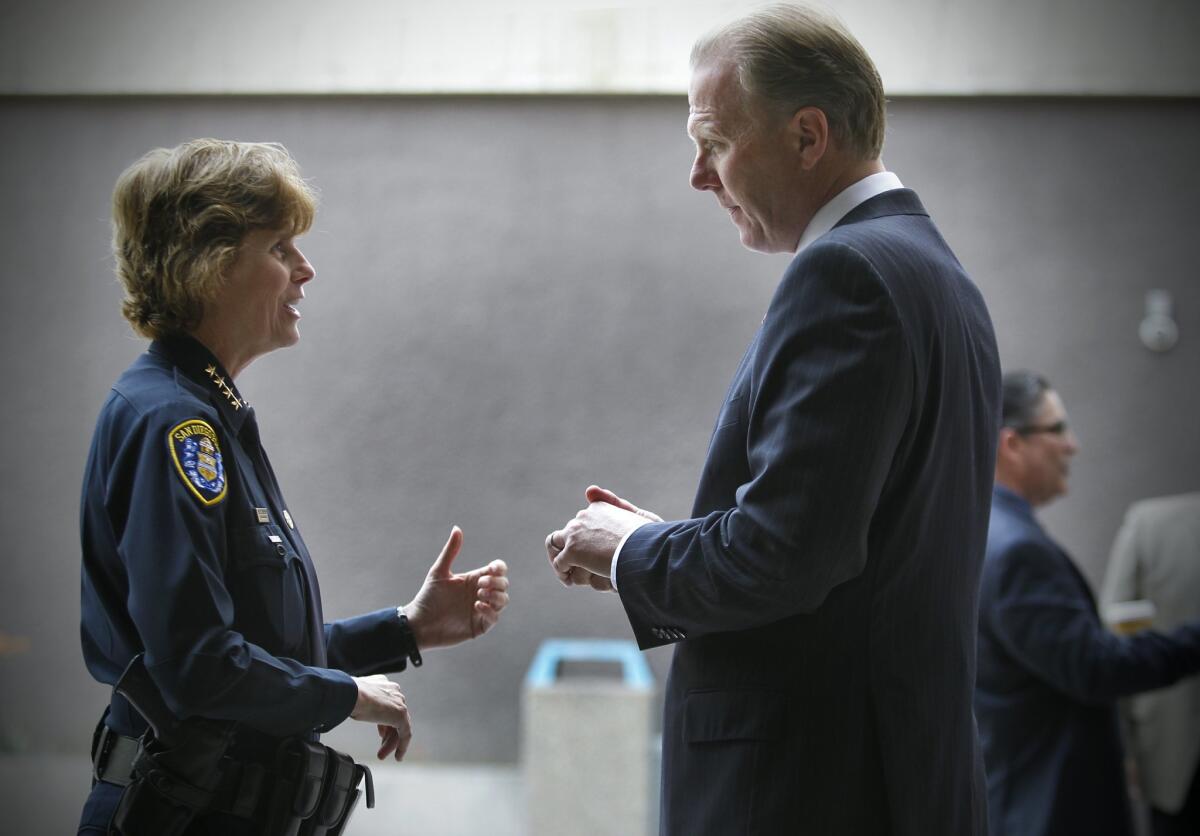
Mayor Kevin Faulconer’s re-election opponents have begun attacking him for a variety of public safety problems, but the mayor says he’s prioritized public safety with more funding and several new initiatives.
With the June 7 primary just over a month away, Democrat Ed Harris and independent Lori Saldaña have criticized the Republican mayor for a shortage of 9-1-1 dispatchers, thousands of untested rape kits and struggles recruiting and retaining police officers.
They say more 9-1-1 calls are going unanswered, there aren’t enough police on the streets and that rapists are going unpunished.
Harris, a former city councilman, and Saldaña, a former state assemblywoman, also note that the city’s crime rate went slightly up in 2015 after consistent declines over several years.
“Kevin has been AWOL when it comes to real solutions on every major issue in this city, and the current crises plaguing the Police Department are direct consequences of his inactions,” Harris said last week.
RELATED: SD murder rate still lowest of big cities | Crime rate up 6 percent in county, reverses downtrend
Faulconer campaign spokeswoman Francis Barraza and city labor leaders said the mayor has done more to address the dispatcher shortage and police officer retention than any of his predecessors.
And the manager of the city’s crime lab said the backlog of more than 2,000 rape kits cited by Saldaña is a mischaracterization.
On dispatchers, the mayor has fully funded all positions and put dispatchers on a short list of employees who got higher pay raises than other members of the Municipal Employees Association in a new labor contract forged in October.
LATEST LOCAL, STATE ELECTION RESULTS
“The mayor has done more in the last six months than any other leader in the city had done for the previous six years,” said Michael Zucchet, general manager of the MEA, which has endorsed Faulconer.
The city is still facing a shortage of dispatchers, which has been blamed on the stress of the job because it includes so many life-or-death situations. The Police Department had 19 vacancies of 131 budgeted dispatcher positions as of April 9.
“Just because the mayor has done more doesn’t mean the issue is resolved, clearly, and it doesn’t mean that the mayor doesn’t understand that more needs to be done,” said Zucchet. “But an allegation that he’s been sitting on the sidelines is factually inaccurate.”
Harris and Saldaña say the dispatcher shortage played a role in unanswered 9-1-1 calls last week in Mira Mesa when a dog fatally attacked an infant.
Alan Arrollado, president of the labor union representing city firefighters, said it’s unclear whether that’s true.
“I know staffing is always a challenge in communications centers, but it’s very easy to be quickly understaffed if you’re overwhelmed by incidents,” he said.
During the Mira Mesa incident, the father called 9-1-1 twice and hung up both times after not reaching a dispatcher in 28 seconds and then 34 seconds. That’s about three times the standard for emergency calls.
Faulconer has prioritized response times and other Fire Department concerns since taking office in March 2014, Arrollado said.
“Mayor Faulconer has put more in the fire budget than several mayors ahead of him, so it’s really hard to say he’s not focused on public safety,” Arrollado said.
That has included adding an ambulance near the international border that’s reduced response times, opening a temporary fire station in Skyline, placing a “fast-response” squad in Encanto and opening the city’s first new fire station in seven years.
“He’s been very responsive on whatever issues we’ve pushed as far as improving response times and staffing,” said Arrollado.
On officer recruitment and retention, the mayor helped negotiate a five-year, $92 million compensation increase package for San Diego police officers last spring.
Critics, including Harris and City Councilman David Alvarez, say that package clearly hasn’t gone far enough because officers have continued to leave the department at the same rate.
That has left the city more than 150 officers short of its 2,036 goal.
“Despite comparable pay with other cities, our law enforcement officers are leaving in record numbers,” Harris said.
The mayor has said he remains optimistic the financial package, which includes both pay increases and more generous benefits, will help slow the number of officers leaving.
Police Chief Shelley Zimmerman said last week that things “would have been a lot worse” without the new contract.
And Brian Marvel, president of the labor union representing police officers, praised the mayor for last year’s deal.
“The mayor made a very good effort to work with us and the council to craft what we thought at the time would be the best solution,” said Marvel. “At the time we struck the deal, we thought that would be the best contract we could to get to facilitate keeping people here. Clearly, it wasn’t as successful as we thought it would be.”
Marvel said he hopes to begin working with the mayor to improve the deal in targeted ways after carefully studying why it’s falling short.
“Let’s do the research and analysis before we just jump into something,” said Marvel, referring to calls for immediate changes.
On rape kits, Saldaña says there are 2,783 from victims that should be tested immediately to further potential prosecutions, which she called an “appalling backlog of unprocessed evidence” the mayor has done nothing to address.
Jennifer Shen, manager of the city’s crime lab, said the city does have about 2,400 untested kits from victims, but that they’ve intentionally chosen not to test those.
The lab only tests kits when there’s evidence a crime was committed and they are reasonably certain the DNA profile in the rape kit belongs to the perpetrator of the crime instead of a spouse or boyfriend.
That’s because they aren’t allowed to search for matches in the federal DNA database unless those two criteria are met.
“We don’t have a backlog of untested kits that need to be tested,” she said. “We feel really comfortable that the ones that haven’t been tested shouldn’t have been tested or couldn’t have been tested.”
She said the lab typically faces a backlog of five to 40 kits that meet the criteria for testing.
The 2,400 untested kits, many dating back to the 1990s, remain in Police Department custody in case new evidence emerges, she said.
Lab employees occasionally go through them to make sure some haven’t been misfiled, which she characterized as extremely rare.
On the crime rate, San Diego’s rose about 8 percent when 2015 is compared to 2014.
But Chief Zimmerman said crime was historically low in 2014, making the increase far less of a concern.
She said if 2014 is removed from the data, crime in 2015 was the lowest in 54 years in San Diego.
In addition, San Diego had the lowest per-capita murder rate of all major cities in the nation in 2014 and 2015.
If no candidate gets more than 50 percent of the vote in the June primary for mayor, the top two candidates will move on to a November runoff.
Get Essential San Diego, weekday mornings
Get top headlines from the Union-Tribune in your inbox weekday mornings, including top news, local, sports, business, entertainment and opinion.
You may occasionally receive promotional content from the San Diego Union-Tribune.

